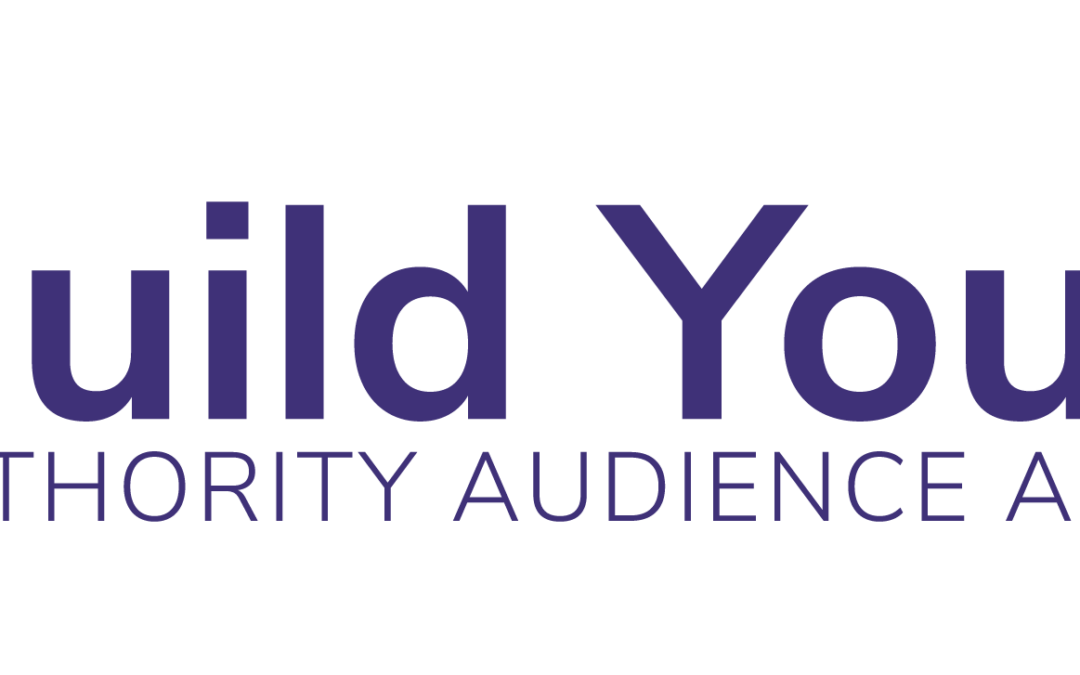Basic Branding Concepts To Finetune Your Brand Positioning
Use these basic branding concepts to finetune your brand so that it is positioned correctly in the marketplace to attract the right audience for your business.
Hi Trish Davies, here to look at basic branding concepts to help create a brand that your audience relates to. Specifically, today I want to cover your logo and potential tagline or slogan.
I want to focus on the thought processes behind your logo design, your tagline and then strategies to gain approval. I say approval but really you are looking for feedback from your ideal audience to make sure you are positioning yourself correctly. So, let’s jump right into it!
Basic Branding Concepts – Developing Your Logo

This is the part of the process where business owners often turn to the professionals. That’s because turning a branding concept into a graphical representation does require some skill. If you outsource this part of the process, don’t look for graphical artists. Instead, look for professionals who have expertise in creating logos and branding concepts.
Nonetheless, even if you hire a conceptual logo artist, you still need to give him or her an idea of what you’re seeking. So, let’s talk about this for a moment.
Okay, at this point you already know how you want to differentiate your business or your products using a unique selling proposition. You will know what type of feeling you’d like your overall branding image to convey. So, take a moment now and consider the following:
- The colours which will convey your brands feeling?
- What font faces and styles convey your brands feeling?
- What types of graphics convey your brands feeling?
- How can you incorporate your company, product or brand name into the logo?
- How can you incorporate your USP into the logo?
Brand Logo Examples

The Jaguar car company has carried the slogan, “Grace, Space, Pace.” Their logo fits both their name and brand beautifully, as it features a sleek silver jaguar gracefully leaping over the word “Jaguar.”
Another example is Burger King. The words “Burger King” are between two halves of a golden bun. The colours of the logo, gold, red and blue are all royal colours, which reflect the “king” concept.
Another example is the Maxwell House logo. It isn’t clear from the name itself that Maxwell House sells coffee, but it’s clear from the logo. That’s because the logo depicts a coffee cup, and the logo also includes the slogan, “Good to the Last Drop.”
Now, all of those logos include graphical components to create the logos. However, some logos are simply text logos. In these cases, the font face, style and colour are all carefully selected. The reason behind that is to make the logo recognizable and to help convey the brand feeling.
Text Based Brand Logo Examples
Clairol, which sells hair-care products. Their logo is simply the word “Clairol” with a simple black font on a white background. Their slogan is “Nice and Easy.” Therefore, their simple logo completely supports this feeling of nice and easy.

Another example of a text logo is Google, which is composed of different brightly coloured letters. Google’s slogan is “Do No Evil,” and this fun, childlike logo embodies that branding concept.
As you can see, even the simplest logos are well thought-out. They all do their part in supporting the overall branding concept. The next phase of basic branding concepts is to gain feedback from your audience.
Basic Branding Concepts – Ask The Market
The idea here is to form a “focus group” comprised of people who most closely represent your target market. So, if your target market includes 18–30-year-old males who own iPhones and live in the United States, then these are the types of people who should be in your focus group.
Naturally, you can do this offline and face to face, which gives you a better opportunity to interact with your market. Not only can you ask follow-up questions, but you can also look at facial expressions. These expressions provide a great clue as to how your market really feels about your branding concepts.
However, in most cases you’ll do this online, such as via a survey. Your main goal here is to make sure that you do NOT lead your focus group by asking biased questions.
For example, asking a question like, “Does this bold logo give you a feeling of confidence?” This is a leading question because it predisposes the person to answer yes. That’s because the word “bold” biases the reader.
In most cases, you may find it better to ask open-ended questions, rather than multiple choice or yes/no questions. That’s because people are likely to give you answers you never even thought of.

Examples of open-ended questions you might include –
- What five descriptive words would you use to describe this logo?
- How does this logo make you feel?
- What does this logo make you think of?
- What does his slogan make you think of?
- How does this slogan make you feel?
- Based on this logo, rate your level of trust in this company on a scale of 1-10. With 1 being low trust and 10 being the highest level of trust.
- Based on this logo and slogan, what kinds of products or services do you think this company provides?
Of course, what people tell you and what they actually do can be two different things. That’s why you also need to complete the next step which is split testing basic branding concepts.
Split Testing Your Basic Branding Concepts
Asking your market about your branding concepts through focus groups or surveys is part of the process. However, you need to split test your concepts in order to let your customers vote with their wallets. It’s the only way to know for sure which branding concepts really motivate your customers to do business with you.
A good example of someone who tests concepts is Tim Ferriss, who authored the book, “The 4 Hour Workweek.” He tested several concepts by running Google AdWords campaigns with different book titles. “The 4 Hour Workweek” won, even though Ferriss admitted that certainly wasn’t his favourite title.
However, he knows that audience appeal is more important than his own personal feelings. That is why he’s gone on to use that same branding concept across multiple products, such as “The 4-Hour Body” and “The 4-Hour Chef.”
Point is, don’t rely on your intuition or your personal bias when it comes to product titles and overall branding concepts. Instead, test these concepts out.
How To Split Test Your Branding Concepts

You can easily do this in a short amount of time, even in as little as a couple days, by creating a Google AdWords campaign. Then tracking to see what gets you the most clickthrough rates and what concepts get you the overall best conversions.
For example, if you’re testing product names, then include the product name in ad headline while keeping the body of the ad the same. The clickthrough rates on that ad will tell you which titles have the most appeal. However, the overall conversion rates will further confirm if people will buy the product.
Here’s what to keep in mind as you start testing your product titles, packaging, logos and overall branding concepts.
Test one thing at time while holding all other variables constant. For example, if you’re testing a product name, then everything else about your campaign should remain the same. This includes traffic sources, ads, colours, logos, etc. The only way to tell for sure what is working is to test one element at a time.
Get your results quickly. Using an advertising platform like Google AdWords is a great way to drive a lot of targeted traffic to your site for the test. If you already have a mailing list, then of course you can split test titles and other factors via email.
I hope that this post on basic branding concepts has been valuable to you. If you would like to learn more about the overall branding process then check out Build Your AU.
Helping you build your authenticity, authority, and audience.
Trish Davies
![]()
Build Your AU


Recent Comments